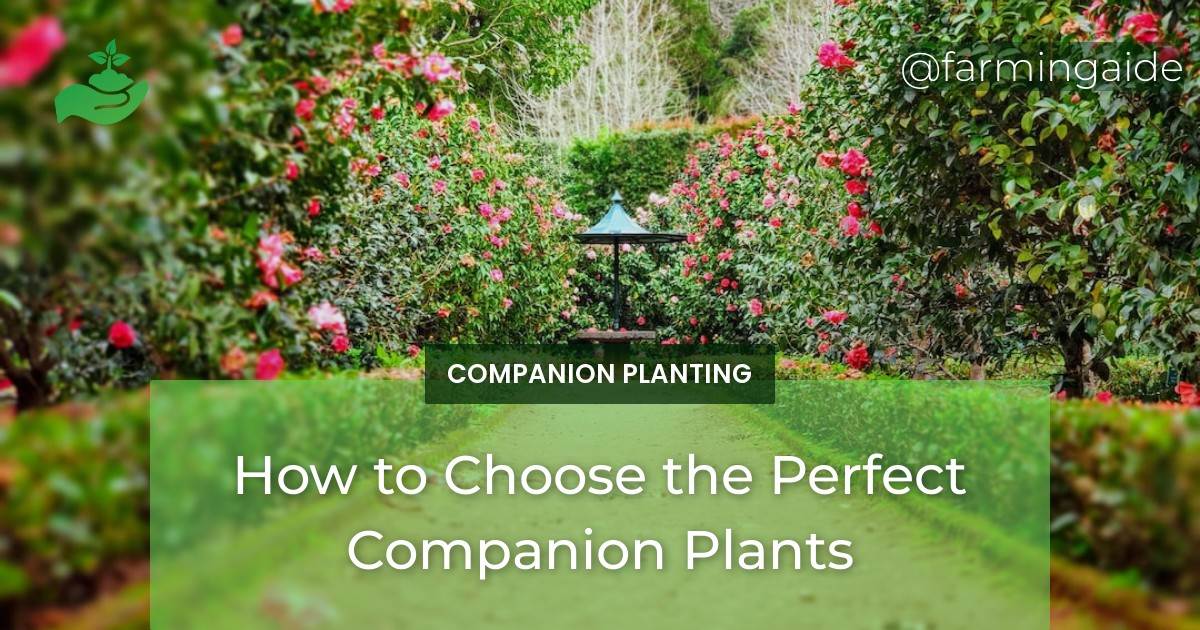When it comes to gardening, choosing the right plants to grow together can make all the difference in the health and productivity of your garden. This is where companion planting comes in – the practice of growing different plants in close proximity to each other for mutual benefits. But with so many options to choose from, how do you know which plants make the perfect companions? In this article, we will explore the factors to consider when choosing companion plants and provide some examples of successful combinations to help you create a thriving and sustainable garden.
Can Companion Plants Help Prevent Pests and Diseases in My Garden?
Yes, companion plants can play a crucial role in controlling pests and diseases in your garden. For example, planting marigolds alongside tomatoes can help prevent nematodes, while basil can repel mosquitoes and flies. Additionally, certain herbs like mint, dill, and cilantro can deter harmful insects and attract beneficial ones.
Factors to Consider when Choosing Companion Plants
Plant Selection and Cultivation
One of the key factors to consider when choosing companion plants is understanding the growth habits and needs of different plants. This includes factors such as sun and shade requirements, soil preferences, and water and nutrient needs. By selecting plants with similar requirements, you can ensure that they will thrive together and not compete for resources.
Another important consideration is the height and spread of plants. It is important to choose plants that will not overshadow or crowd each other, as this can lead to stunted growth and reduced yields.
Soil Management and Composting
Knowing the pH and nutrient levels of your soil is crucial when selecting companion plants. Some plants prefer acidic soil, while others thrive in alkaline conditions. By understanding the needs of your plants, you can choose companion plants that will grow well in the same soil conditions.
Companion plants can also be used to improve soil health and fertility. For example, legumes have the ability to fix nitrogen in the soil, making it more available for other plants to use. This can be beneficial for plants that are heavy feeders, such as tomatoes or corn.
ALSO READ
Pest and Disease Control
One of the main benefits of companion planting is its ability to naturally repel pests and diseases. By selecting plants with natural pest-repelling properties, you can reduce the need for chemical intervention in your garden. Additionally, some companion plants can attract beneficial insects, such as ladybugs and lacewings, which can help control pest populations.
It is also important to avoid planting susceptible plants together, as this can increase the risk of spreading diseases. For example, planting tomatoes and potatoes together can lead to the spread of blight, a common fungal disease.
Sustainable Gardening Practices
Companion planting is a key component of sustainable gardening practices. By planting a diverse range of plants, you can promote soil health and biodiversity in your garden. This can help reduce the risk of pest and disease outbreaks, as well as improve overall garden health.
Intercropping and crop rotation are also important practices to incorporate in your garden. By planting different crops in close proximity to each other and rotating them each season, you can reduce pest and disease pressure and prevent nutrient depletion in the soil.
ALSO READ
Seasonal Planning and Crop Rotation
Understanding the growing seasons and sunlight requirements of different plants is essential when planning your garden. Some plants prefer cooler temperatures, while others thrive in warmer weather. By choosing companion plants that have similar growing seasons, you can ensure that they will thrive together.
Crop rotation is also important for maintaining soil health and preventing the buildup of soil-borne diseases. By rotating crops, you can also take advantage of different growing seasons and fill in gaps in your garden with companion plants.
Example Companion Plant Combinations
- Tomatoes and Basil
- Carrots and Onions
- Beans and Corn
- Lettuce and Radishes
- Cucumbers and Sunflowers
Planting Techniques for Companion Plants
There are several techniques for planting companion plants in your garden:
- Interplanting: planting companion plants within the same area
- Border Planting: creating a border of companion plants around a main crop
- Intercropping: planting different crops in close proximity to each other for mutual benefits
Maintenance and Care for Companion Plants
Regularly monitoring and addressing any pest or disease issues is important for maintaining the health of your companion plants. This may include handpicking pests, using organic pest control methods, or removing diseased plants.
Pruning and thinning out plants is also important for promoting airflow and reducing competition for resources. Providing adequate water and nutrients for all plants is crucial for their growth and productivity.
Conclusion
Choosing the perfect companion plants for your garden requires careful consideration and planning. By understanding the factors to consider when selecting companion plants and utilizing sustainable gardening practices, you can create a thriving and productive garden. Remember to choose plants with similar needs, rotate crops, and incorporate a diverse range of plants to promote soil health and biodiversity. With proper care and maintenance, companion plants can work together to create a beautiful and sustainable garden.
RELATED ARTICLES:


